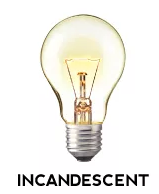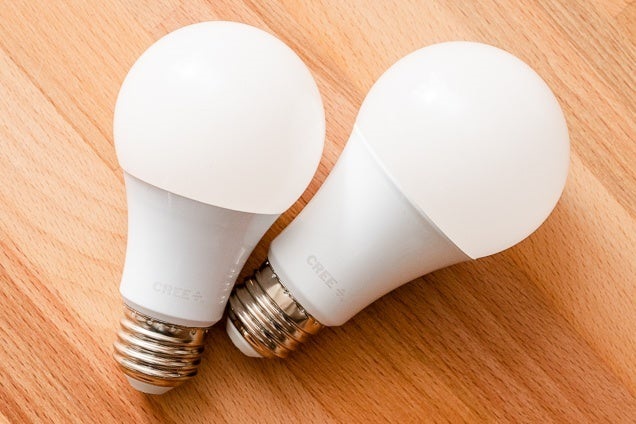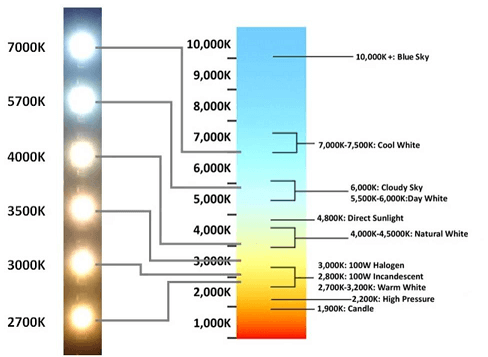LED lights have become quite popular these days because of their amazing features like less power consumption.
In addition to that, another famous benefit of the LED bulbs is less heat generation.
But is that really true? Do LED lights stay cool while powered on for longer duration?
Let’s explore the answer to this question in this article. Here, we have analysed all the information to understand the truth behind this claim.
But first, lets start the conversation with what are LED bulbs?
They are semi-conductor devices in nature which emit visible light when electric currents pass through them. LED bulbs can work far more efficiently than incandescent bulbs. They have more efficiency than incandescent bulbs, with a relative ninety percent. The brightness of LED lighting is measured in terms of lumen. So, higher output of LEDs is the more likely they will heat up.
Outline
ToggleSo, Do LED Bulbs Get Hotter?
Not exactly. They can actually become warm rather than hot like other bulb fixture types.
Let me explain clearly now.
A tungsten filament bulb with a wattage exceeding 100 watts can only produce 10 watts of light. The remaining 90 watts of heat will be wasted. It is because incandescent bulbs are extremely hot, and it becomes impossible for you to touch them without waiting until they cool down.
When it comes to LEDs, they are more efficient than tungsten bulbs. However, they do generate some heat.
For instance, a 10-watt LED bulb will produce light at 8 watts, while heat energy is produced by the remaining 2 watts. This comparison will help you understand the differences.
- The LED bulb produces 8 watts of output and 2 watts heat with 10 watts input. The LED bulb produces a maximum output of 12 watts at 15 watts, and can also generate 3 watts heat.
- The tungsten filament bulb produces only 10 watts of heat and can be used with 100 watts input.
So, compared to tungsten or other bulb types, LED bulbs generate less heat. Or generally, it is usually warm in temperature.
Can LED Bulbs Become too Hot?
LED bulbs are equipped with heat sinks so that the minimum heat generated will be released into into the surrounding environment. But this becomes difficult if you place LED light bulbs within enclosed fixtures.
An enclosed fixture that doesn’t allow proper ventilation can dramatically affect the temperature of an LED bulb. This can cause it to overheat, which will reduce its lifespan. Some bulbs warn you to not use them in enclosed porch lights or ceiling fans. The LED will also heat up over time, resulting in a reduced efficiency and even a hotter LED.
How Hot Can LED Bulbs Actually Become?
To find out the answer for that, we have analysed the LED bulbs. In our research, we found that heatsink temperature in an LED bulb when fully lit was between the range of 60 °C to 100 °C, based on the model, airflow, room temperature and other factors. You can check the below thermal image analysis that we tested with some LED light bulbs. You can see that; higher temperature has a yellower hue.
From right to the left…
- LIFX A21 bulb has full colour range with maximum power white so the output is more than 1000 lumens.
- 13W LED has the output of 1055 lumens
- 9W LED bulb has the output of 600 lumens
The 9W LED bulbs are the hottest options as they are more efficient and produce less light, but they have no heat sink or management of airflow. The heat sink is sealed at 86°C and 186°F.
The 13W LEDA19 bulbs are slightly cooler. The LED A19 bulbs are 30% brighter compared to compact ones. However, they come with larger heat sink area which allows more heat to escape into air.
When it comes to the LIFX A21 bulb, it is the brightest and most efficient, as well as the coolest because they use airflow management design. The electronics are kept cool in this new LED bulb technology.
Even if the room temperature is high that is more than 28°C 82°F or in semi-sealed areas, LIFX A21 bulb maintains lowest temperature for the heat sink system and electronics.
Do LED Bulbs That Get Hot Last Long?
It is evident that LED bulbs are very efficient. However, this fact can be altered by heat. The efficiency of these light bulbs can be greatly compromised by the heat they produce.
Temperature at the junction of an LED can be affected by the surrounding temperature and other parts of the bulb like the lens or driver. The LED lights have many parts that can change the voltage of the electricity coming from the outlet in your home to the lower voltage needed to run the LED chips. This makes LED bulbs more sensitive to heat than incandescent bulbs.
You may have received a warning regarding their use if you purchased LED bulbs at a low price. These bulbs should not be placed in completely closed fixtures. These enclosed fixtures would heat up and reduce the lifespan of LED bulbs.
If you are using high-quality bulbs that come with a warranty, enclosed fixtures will only be a benefit. The LEDs are usually not susceptible to getting burned. Heat can affect the quality of their light. Light degradation is the term for the gradual loss of brightness over time.
Understanding LED “Temperature”
Whenever you are out in the market to shop for LED bulbs, you will come across a variety of LED bulbs of different temperatures. Do not confuse this “temperature” with the heat production of the light bulb. The LED Temperature is basically the “colour temperature” of the light produced by the LED.
While we normally use °C or °F for heat temperatures, colour temperatures are presented in Kelvins, or K. So, what colour temperature LED bulbs should you pick? Let’s consider a few examples to understand the colour temperature better.
A candle flame, which is more orangish-yellow in colour, usually has a colour temperature around 1800-1900K. Comparing the candle-light to a light bulb, the colour temperature reaches 2400K. Similarly, as the colour temperature increases, the colour starts to become more blueish.
The LED lights with a rating up to 3000K will have a warm glow. However, if you are specifically looking for neutral white colour, the right colour temperature for it will be 4000K.
Some Frequently Asked Questions
The diffuser is the plastic dome that shines the light out of LED light bulbs. It should be used to handle them. The heat sink should not be touched or handled by LED light bulbs once they are lit.
Simply put, LED lights that are well-made can last for up to 24 hours and be used seven days a week. Because LEDs emit very little heat (unlike other types of lighting), they are less likely to catch fire or overheat.
LED bulbs don’t produce enough heat to light a fire. Because they use nearly all of their power sources for light emission, this is why they don’t generate enough heat to start a fire. Overheating is the most common reason for bulbs to catch fire, so LED lights are safer that incandescent lights.
They do. The LED lights get warm but not too hot to touch. And for the LED lights to reach the warm temperature, it depends largely on dependent on the type of LED used and their surroundings. For specific safety recommendations, make sure to read the safety instructions provided by the manufacturer if you are decorating a Christmas tree or adding lights in a bedroom, or to shrubs in your front yard. Although LED lights are not likely to get too hot to cause damage, this will depend on the specific area and product being used.
Few Takeaways Before Wrapping Up…
LED lights are the latest technology in the light variants. They consume less power and have other benefits as well, including less heat generation.
Because the less heat generation, they are suitable for many applications like artwork. When it comes to whether the LED lights can get hot or not – it is true that the temperature of LED light rises but does get too hot that it burns your hand or catches fire. They just get warm when powered on for a long time.
So, did the information provided in this article has helped you clarify the doubts related to LED lights? If not, write to us in the comment section below. We will reply at the earliest.




